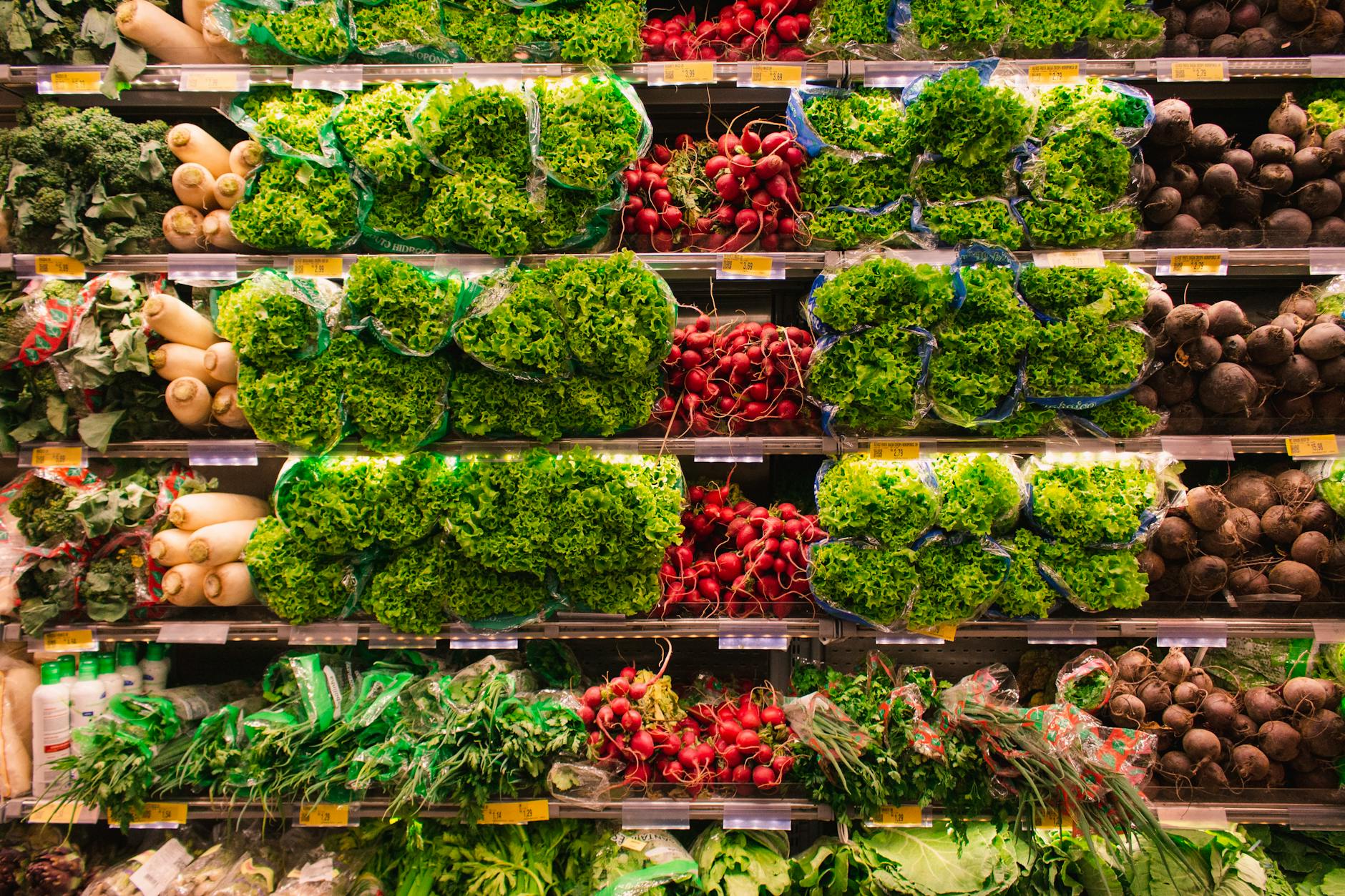The way we buy our groceries is undergoing a transformation. With the advent of online shopping platforms and digital marketplaces, planning your grocery shopping has never been more dynamic. This new landscape offers a multitude of options, from doorstep deliveries to curated meal kits, all accessible with a few taps on your smartphone. Navigating this digital grocery aisle requires a fresh approach, integrating technology, budgeting, and personal preferences to make the most of what’s available.
The Evolution of Grocery Shopping
Traditionally, grocery shopping meant making a list, heading to the nearest supermarket, and strolling through aisles filled with products. Today, the scenario has shifted dramatically. Online grocery shopping platforms like Getit.qa have redefined convenience. These services allow consumers to order everything from fresh produce to household essentials without leaving their homes.
This shift is not just about convenience but also about adapting to new lifestyles. Urbanization, busy schedules, and the desire for contactless transactions have fueled the growth of ecommerce in the grocery sector. The rise of mobile applications and digital payment systems has further streamlined the process, making it easier for consumers to access a wide range of products at competitive prices.
Benefits of Embracing Online Grocery Platforms
Switching to online grocery shopping brings a host of advantages:
Time Efficiency
One of the most significant benefits is the time saved. No more commuting to the store, searching for parking, or waiting in checkout lines. Online platforms allow you to shop anytime, whether during a lunch break or late at night.
Access to a Wider Range of Products
Digital stores often have a more extensive inventory than physical locations. You can find specialty items, international products, and niche brands that might not be available in local supermarkets.
Personalized Shopping Experience
Through artificial intelligence and machine learning, online platforms offer personalized recommendations based on your shopping history. This feature helps discover new products that align with your preferences.
Budget Management
Online shopping carts display running totals, enabling better budget control. Additionally, digital coupons and promotions are easily accessible, providing savings opportunities without the hassle of clipping paper coupons.
Overcoming Challenges in the Digital Grocery Landscape
While online grocery shopping offers numerous benefits, it also presents challenges that require careful navigation.
Assessing Product Quality
Without the ability to inspect items physically, concerns about freshness and quality arise. To mitigate this, many platforms provide detailed product descriptions, images, and customer reviews. Services like Shipt and FreshDirectemphasize sourcing high-quality goods and offer satisfaction guarantees.
Delivery Logistics
Scheduling deliveries can be tricky, especially with perishable goods. Innovations in cold chain logistics ensure that products remain fresh during transit. Companies are investing in temperature-controlled packaging and real-time tracking to enhance reliability.
Navigating Substitutions
Out-of-stock items may lead to substitutions. Clear communication with shoppers or setting preferences for replacements can help manage expectations.
Leveraging Technology for Efficient Grocery Planning
Technology plays a pivotal role in streamlining grocery shopping in the ecommerce era.
Grocery Planning Apps
Applications like AnyList, Out of Milk, and Mealime assist in creating shopping lists, organizing recipes, and planning meals. They sync across devices and can be shared with family members, ensuring everyone is on the same page.
Voice-Activated Assistants
Devices equipped with voice recognition like Amazon Echo and Google Home allow users to add items to their shopping lists hands-free. This feature is particularly useful while cooking or when hands are occupied.
Subscription Services
For staples and frequently used items, subscription models offer convenience and savings. Services like Amazon’s Subscribe & Save automate deliveries at chosen intervals, ensuring you never run out of essentials.
The Role of Delivery Services and Logistics
Efficient delivery is the backbone of online grocery shopping.
Same-Day and On-Demand Deliveries
Companies are racing to offer faster delivery times. Instacart Express and Walmart+ provide same-day delivery options, catering to last-minute needs.
Micro-Fulfillment Centers
To expedite deliveries, retailers are establishing micro-fulfillment centers closer to consumers. These small-scale warehouses utilize robotics and automation to process orders quickly.
Contactless Deliveries
In response to health concerns, contactless delivery options have become standard. Delivery personnel leave orders at designated spots, reducing physical interactions.
The Impact of Meal Kits and Subscription Boxes
Meal kits have emerged as a popular alternative to traditional grocery shopping.
Convenience and Variety
Companies like HelloFresh, Blue Apron, and Sun Basket deliver pre-portioned ingredients with recipes, simplifying meal preparation.
Culinary Exploration
These services introduce users to new cuisines and cooking techniques, expanding culinary horizons without the need to source exotic ingredients independently.
Waste Reduction
By providing exact portions, meal kits help reduce food waste. Packaging innovations aim to minimize environmental impact, though concerns about packaging waste persist.
Sustainability and Ethical Considerations
As consumers become more environmentally conscious, sustainability influences grocery shopping decisions.
Supporting Local Producers
Online platforms like Farmdrop and Misfits Market connect consumers with local farmers, promoting fresh, seasonal produce and reducing carbon footprints associated with long-distance transportation.
Eco-Friendly Packaging
Retailers are exploring biodegradable and recyclable packaging options. Loop offers a zero-waste platform where products are delivered in reusable containers.
Ethical Sourcing
Consumers are demanding transparency about product origins. Certifications like Fair Trade, Rainforest Alliance, and Organic provide assurance about ethical practices.
Security and Privacy in Ecommerce Transactions
With increased online transactions, safeguarding personal information is crucial.
Secure Payment Gateways
Trusted platforms use encrypted payment systems to protect financial data. Services like PayPal, Apple Pay, and Google Pay offer additional layers of security.
Data Privacy
Understanding how retailers use personal data is essential. Reviewing privacy policies and adjusting account settings can help control the information shared.
Vigilance Against Scams
Awareness of phishing attempts and fraudulent websites is important. Verifying website authenticity and being cautious with unsolicited communications help maintain security.
Future Trends in Grocery Ecommerce
The landscape of grocery shopping continues to evolve, with emerging technologies promising further changes.
Augmented Reality Shopping
AR technology may allow consumers to virtually navigate stores, examine products, and make selections as if they were physically present.
Autonomous Deliveries
Self-driving vehicles and drones could revolutionize delivery services. Companies like Nuro and Zipline are testing autonomous delivery solutions.
Personalized Nutrition
Advancements in nutrigenomics may lead to personalized grocery recommendations based on individual genetic profiles, optimizing health and wellness.
Bridging the Gap Between Digital and Physical Shopping
While ecommerce grows, the integration of online and offline experiences is becoming seamless.
Click-and-Collect Services
Options like curbside pickup combine the convenience of online ordering with the immediacy of in-store pickup. Retailers like Target and Kroger offer these hybrid models.
Experiential Retail
Physical stores are transforming into experiential centers, focusing on customer engagement rather than just transactions. Interactive displays and cooking demonstrations enhance the shopping experience.
Loyalty Programs
Unified loyalty programs across platforms reward customers regardless of how they shop. Points and rewards can be earned and redeemed both online and in-store.
Crafting a Personalized Grocery Shopping Strategy
Creating an effective grocery shopping plan in the digital age involves several considerations.
Defining Your Needs
Assess dietary preferences, budget constraints, and frequency of purchases to determine which platforms and services align with your lifestyle.
Comparing Platforms
Evaluate different services based on product selection, delivery options, fees, and user experience. Reading reviews and seeking recommendations can provide insights.
Staying Flexible
Being open to trying new services and adapting to technological advancements keeps the shopping experience fresh and efficient.
The Socioeconomic Impact of Ecommerce Grocery Shopping
The rise of online grocery shopping has broader implications for society.
Employment Dynamics
While automation and ecommerce create new job opportunities in technology and logistics, they also disrupt traditional retail employment.
Access Disparities
Not everyone has equal access to online shopping due to factors like internet connectivity, digital literacy, and socioeconomic status. Addressing these disparities is crucial for inclusive growth.
Community Relations
Local businesses may feel the impact of large ecommerce platforms. Supporting local retailers through online marketplaces can help sustain community economies.
Embracing Change While Valuing Tradition
As we navigate this new era, it’s important to balance the convenience of technology with the value of traditional practices.
The Joy of Physical Shopping
For some, visiting a grocery store is more than a chore; it’s an experience involving sensory engagement and social interaction.
Supporting Small Businesses
Local markets and specialty shops offer unique products and personalized service that enrich the shopping experience.
Mindful Consumption
Whether shopping online or in-store, making conscious choices about what we buy and how we consume contributes to personal well-being and environmental sustainability.
Winding Down
The age of ecommerce has transformed grocery shopping into a multifaceted experience, blending technology, personalization, and convenience. By understanding the tools and services available, consumers can craft a grocery shopping strategy that fits their needs and values.
As the industry continues to innovate, staying informed and adaptable will ensure that you make the most of what this digital revolution has to offer.



